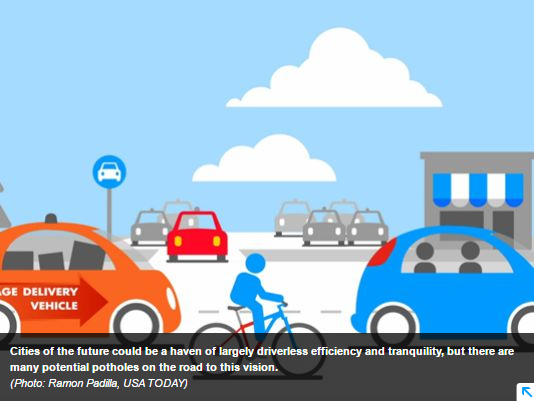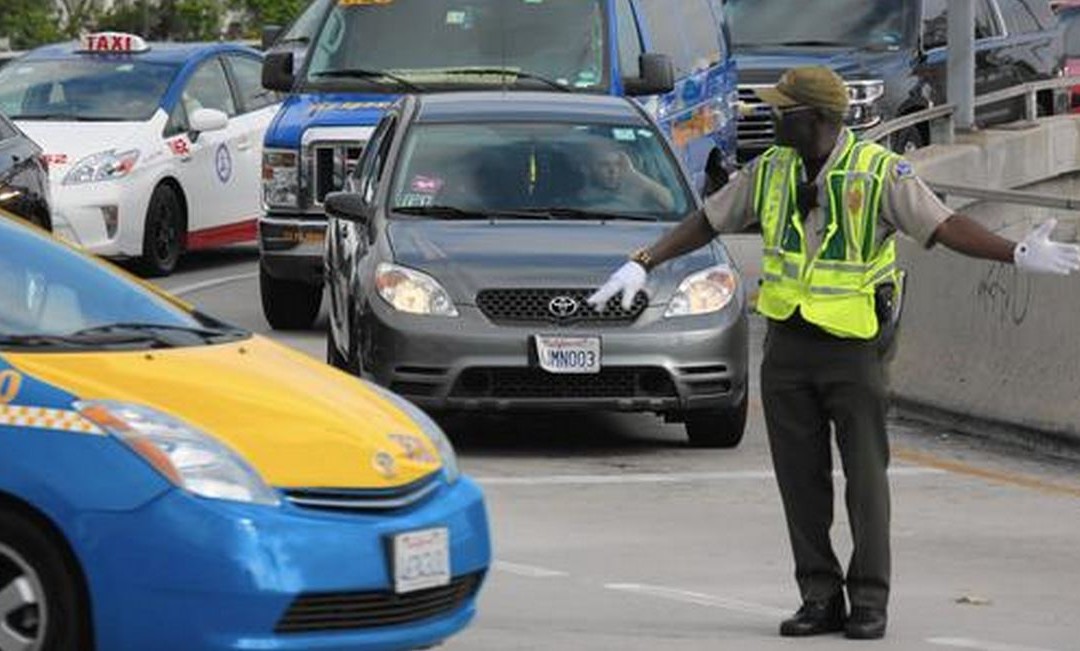
by Innovative Mobility Research | Feb 8, 2016 |
Marco della Cava, 12:28 p.m. EST November 13, 2015 SAN FRANCISCO – The city of the future has had countless fantasy blueprints, from The Jetsons’ pleasant hive of automated efficiency to Blade Runner’s dystopian tangle of urban chaos. But the reality is the city of future is closer than you think, as tech companies and automakers floor the pedal on projects ranging from cars that drive themselves to apps that aggregate transportation options. Conversations with mobility experts here and abroad paint a picture of an urban revolution that is already underway in a patchwork of cities from Seattle to Stockholm. “The main thing with automated and connected tech is to make sure it’s reliable first,” says Chris Hendrickson, director of the Traffic21 Institute at Carnegie Mellon University. “But the opportunities for change are impressive.” To read the rest of the story,...
by Innovative Mobility Research | Sep 9, 2015 |
Authors: Randall Guensler, Ph.D, Susan Shaheen, Ph.D, Francisca Mar, Cameron Y. Yee Published: March, 1998 Abstract: The Conformity Rule, adopted in November 1993, by the U.S. Environmental Protection Agency (USEPA) under the requirements of Section 17(c)(4) of the Clean Air Act, establishes strict procedures for determining conformity of transportation plans to state air quality management plans. Conformity requirements apply to all transportation plans, programs, and projects, funded or approved under title 23 U.S.C. or the Federal Transit Act. The Conformity Rule requires that transportation planning agencies apply transportation demand and emission models to demonstrate that transportation plans and all projects contained in a plan will not exceed the allowable emissions budget established in the air quality management plan and will not cause a violation of local air quality standards. This project was undertaken by the Institute of Transportation Studies at Davis (ITS-Davis) for the California Department of Transportation (Caltrans). ITS-Davis researchers were asked to undertake this project for three reasons to: 1) provide objective opinions from individuals outside the purview of agencies responsible for implementing the Rule; 2) identify and discuss technical issues associated with emissions modeling that should be considered in implementing the Rule; and 3) explore potential institutional conflicts that may arise in implementing the Rule. The primary goal of the overall project was to develop a conformity modeling protocol for project analysis. Before the technical modeling guidance document could be developed, the research team undertook a comprehensive review of the Rule and applicable conformity literature to determine where, when, and under what conditions, conformity findings for local projects must be made. The first section of this policy...

by Innovative Mobility Research | Jul 22, 2015 |
Uber likes to say it is the great equalizer when it comes to transportation: Anyone with a smartphone can use the app to hail a ride quickly and affordably. The state of California wants Uber to prove it, particularly the “anyone” part. Blind people? People in wheelchairs? People who want a ride to a bad neighborhood, or out of one? By law, taxi companies are required to serve those customers and can’t pick and choose who gets rides, a practice known as redlining. Now ride-hailing is under the same scrutiny. Uber may contend that it offers a better alternative than taxi companies, but at least where the state is concerned, they are increasingly becoming one and the same. The California Public Utilities Commission is demanding detailed driver data from Uber and rival ride-sharing companies — data that Uber, citing passenger privacy and proprietary business information, has so far refused to turn over. That led to a dramatic standoff Wednesday when an administrative judge for the CPUC recommended that Uber be fined $7.3 million and its operations in the state be suspended. The agency requires ride data by ZIP Code. But, said Susan Shaheen, co-director the UC-Berkeley Transportation Sustainability Research Center, “I’m not sure ZIP Code-level data is precise enough to capture differences in socioeconomic income.” Getting more granular, going block by block, would be more illuminating, she said. That’s the way many taxi regulators evaluate their data. To read more, click...

by Innovative Mobility Research | Jul 22, 2015 |
Automobile transportation options have mushroomed in recent years. No longer is it the simple choice of buying or leasing a car for long-term use or renting one for short-term use. Ride-sharing services like Uber and Lyft are providing options for those who don’t want to own a car at all, Zipcar and other services are covering the very short-term rental market, and peer-to-peer car sharing services such as RelayRides and Getaround are allowing auto owners to rent out their cars when they are not being used. These services have not collectively taken huge dents out of auto sales yet — but they are likely to in the future, and auto manufacturers are deciding how to address the issue. Susan Shaheen, a UC Berkeley engineering professor and transportation expert, suggests that every vehicle that enters into car sharing full-time replaces four to six sales of new cars and delays up to seven more. Reading the writing on the wall, most auto manufacturers are launching pilot programs to decide how to enter these markets without cannibalizing their sales. Ford chose the route of helping car buyers rent out their cars by teaming with Getaround. To them, click...
by Innovative Mobility Research | Jun 18, 2015 |
By Michelle Quinn If the future of work is more about getting gigs and less about holding traditional jobs, what sort of protections will workers have? That’s what I’m wondering after news that the California Labor Commission ruled that a former Uber driver in California was technically an employee, and that the company owes her more than $4,000 to cover some of her costs. The decision is nonbinding and applies to just this one former driver, as the company points out. But we are only getting started talking how new companies in the so-called “sharing economy” are reshaping work and whether this new model — some have called these workers the “uncollared” — is something that benefits both workers and customers. “Innovation often gets out in front of public policy,” Susan Shaheen, an adjunct professor of civil and environmental engineering at UC Berkeley. It’s time for the companies, regulators, policymakers and the public to really look at whether this model — less “sharing” but more of a new tech middleman connecting service providers with users via an app — is a win-win for everyone, and if not, come up with new solutions. But workers, too, should have a say. Uber and other firms have given their drivers many opportunities they may not have previously had to earn money in a new way. If these services have to change to comply with state and federal labor laws, that could fundamentally change the relationship they have with their drivers. If Uber has to set schedules, pay benefits and send their drivers through an HR office just like a regular employer, will...




